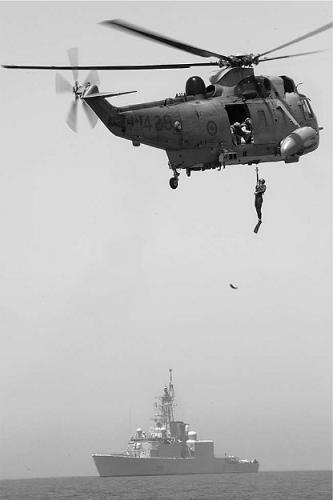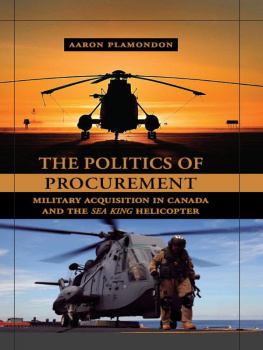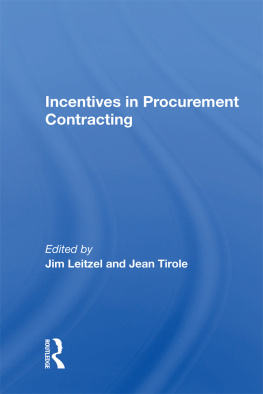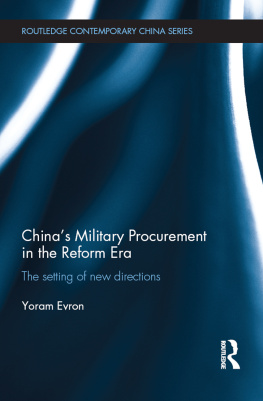Plamondon - The Politics of Procurement
Here you can read online Plamondon - The Politics of Procurement full text of the book (entire story) in english for free. Download pdf and epub, get meaning, cover and reviews about this ebook. year: 2010, publisher: University of British Columbia Press, genre: Politics. Description of the work, (preface) as well as reviews are available. Best literature library LitArk.com created for fans of good reading and offers a wide selection of genres:
Romance novel
Science fiction
Adventure
Detective
Science
History
Home and family
Prose
Art
Politics
Computer
Non-fiction
Religion
Business
Children
Humor
Choose a favorite category and find really read worthwhile books. Enjoy immersion in the world of imagination, feel the emotions of the characters or learn something new for yourself, make an fascinating discovery.
The Politics of Procurement: summary, description and annotation
We offer to read an annotation, description, summary or preface (depends on what the author of the book "The Politics of Procurement" wrote himself). If you haven't found the necessary information about the book — write in the comments, we will try to find it.
The Politics of Procurement — read online for free the complete book (whole text) full work
Below is the text of the book, divided by pages. System saving the place of the last page read, allows you to conveniently read the book "The Politics of Procurement" online for free, without having to search again every time where you left off. Put a bookmark, and you can go to the page where you finished reading at any time.
Font size:
Interval:
Bookmark:

The Politics of Procurement
Aaron Plamondon
The Politics of Procurement
Military Acquisition in Canada and the Sea King Helicopter

UBC Press 2010
All rights reserved. No part of this publication may be reproduced, stored in a retrieval system, or transmitted, in any form or by any means, without prior written permission of the publisher, or, in Canada, in the case of photocopying or other reprographic copying, a licence from Access Copyright (Canadian Copyright Licensing Agency), www.accesscopyright.ca.
21 20 19 18 17 16 15 14 13 12 11 10 5 4 3 2 1
Printed in Canada on FSC-certified ancient-forest-free paper (100 percent post-consumer recycled) that is processed chlorine- and acid-free.
Library and Archives Canada Cataloguing in Publication
Plamondon, Aaron, 1975
The politics of procurement : military acquisition in Canada and the Sea King helicopter / Aaron Plamondon.
Includes bibliographical references and index.
ISBN 978-0-7748-5910-3 (bound); ISBN 978-0-7748-5910-3 (ebook)
1. Canada. Canadian Armed Forces Procurement. 2. Canada Armed Forces Procurement. 3. Defense contracts Government policy Canada. 4. Canada. Canadian Armed Forces Equipment. 5. Canada Armed Forces Equipment. 6. Military helicopters Purchasing Canada. 7. Sea King (Helicopter). 8. Defense contracts Canada. I. Title.
UA600.P53 2010 - 355.62120971 - C2009-905204-0

UBC Press gratefully acknowledges the financial support for our publishing program of the Government of Canada through the Book Publishing Industry Development Program (BPIDP), and of the Canada Council for the Arts, and the British Columbia Arts Council.
This book has been published with the help of a grant from the Canadian Federation for the Humanities and Social Sciences, through the Aid to Scholarly Publications Programme, using funds provided by the Social Sciences and Humanities Research Council of Canada.
Cover image: Top: A sunrise view of a CH-124 Sea King on the tarmac at 438 Tactical Helicopter Squadron (438 Tac. Hel. Sqn.). Bottom: Operation Sextant, Indian Ocean: Captain Joel MacDermaid, a Navigator from 443 Maritime Helicopter Squadron. Sources: CF photos by Sgt. Ren Dubreuil and by Warrant Officer Carole Morissette. Courtesy of National Defence. Reproduced with the permission of the Minister of Public Works and Government Services, 2009
UBC Press
The University of British Columbia
2029 West Mall
Vancouver, BC V6T 1Z2
604-822-5959 / Fax: 604-822-6083
www.ubcpress.ca
Contents

on 28 May 2008.
Source: CF photo by M.Cpl. Robin Mugridge. Courtesy of National Defence. Reproduced with the permission of the Minister of Public Works and Government Services, 2009
When the Avro Arrow was cancelled, at least there was a study involved in the decision. The cancellation of the Sea King replacement involved no study at all, and this was really an unforgivable error. It was our worst national procurement mistake ... worse than the Arrow.
Former Chief of the Defence Staff General (retired) Paul Manson
The procurement of military weapons and equipment in Canada has often been controlled by partisan political considerationsnot by a clear desire to increase the capability of the military. Actual military strength has typically been given a low priority by Canadas civilian leaders. As a result, Canada has often failed throughout its history to be effective in the design, production, or even purchase of weapons and equipment necessary for its military to carry out the priorities of the civil power. To secure even the most modest materiel, military officials have had to comply with a succession of rules that can only be described as illogical from the standpoint of military performance. Much like Alice in Through the Looking Glass, they have had to run twice as fast just to stay in the same place. National Defence Headquarters (NDHQ) has not helped itself, however, by making the process more efficient from its end. The internal process has continually evolved into an amorphous mass of bureaucracy, with a myriad of committees that require endless analyses, re-evaluations, and approvals. The history of the Sea King maritime helicopter and the failed attempts to replace it over three decades is a product of all these weaknesses within the Canadian procurement system. It is the ultimate case study.
This is a story of delays. The word, and all its possible synonyms, will, in fact, be overused. There is simply no way around it. This study reveals the increasing timeline of procurement in Canada by tracing the introduction of naval helicopters in the 1950s, the procurement of the first modern Anti-Submarine Warfare (ASW) helicopter, the Sikorsky Sea King in 1962, and the multiple failed attempts to replace it. As I will explain in the Introduction, the procurement process evolved over time and used varying nomenclature but was usually composed of several fundamental elements: a definition of military requirement; validation of the requirement; government approval of the project; selection of a procurement strategy; bid solicitation and source selection; negotiation and award of contract; administration of the contract to purchase the piece of equipment decided on; delivery of the product, life cycle support, and eventually disposal. The fact that the attempts to replace the Sea King necessitate a book-size study reveals that there is a procurement problem in Canada. The fact that the story is ongoing reveals that the problem is severe. It could be the most poorly executed military procurement ever undertakenanywhere.
Helicopters have a long and proud history in Canadian naval operations. The use of a medium-sized helicopter aboard smaller Destroyer Escort (DE) vessels instead of aircraft carriers in the 1950s was a distinctly Canadian idea. The technical innovations used by Canadian engineers to carry this out changed how ASW operations were conducted by every modern navy in the world, including those of Britain and the United States. There are few examples, indeed, where Canada can lay claim to such initiative and ingenuity regarding military matters. As Canada had only one carrier, naval officers believed that, if they could fly helicopters from their smaller vessels, they could maximize the potential of their ships. These vessels were already lagging behind Soviet submarine technology. Discussions on the procurement of a fleet of ASW helicopters for the Royal Canadian Navy (RCN) had been ongoing since 1954, and by 1961 officials were still wavering over which aircraft to buy. This waffling was due largely to the uncertainty of the role that helicopters were going to fulfill in the RCN and rivalries between the three Canadian services, army, air force, and navy. A further complication with the introduction of helicopters into the RCN was the completion of trials for the Hauldown and Rapid Securing Device, or Beartrap, as it was more commonly known. The Beartrap was the integral component of the helicopter-carrying DE platform that allowed a large helicopter to land on such a small ship in the turbulent conditions common in naval operations. It was designed and built in Canada. As it was a new technology, it was necessary to put it through extensive testing before helicopters could safely fly from destroyers. The concept had been conceived in 1955, and the design, production, and development trials were carried out throughout the 1960s. The
Next pageFont size:
Interval:
Bookmark:
Similar books «The Politics of Procurement»
Look at similar books to The Politics of Procurement. We have selected literature similar in name and meaning in the hope of providing readers with more options to find new, interesting, not yet read works.
Discussion, reviews of the book The Politics of Procurement and just readers' own opinions. Leave your comments, write what you think about the work, its meaning or the main characters. Specify what exactly you liked and what you didn't like, and why you think so.












